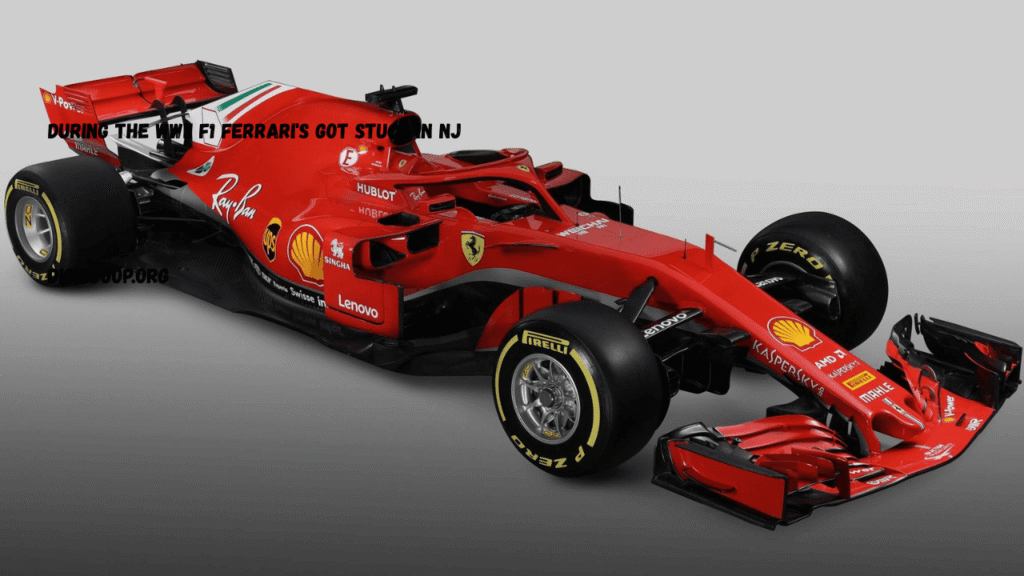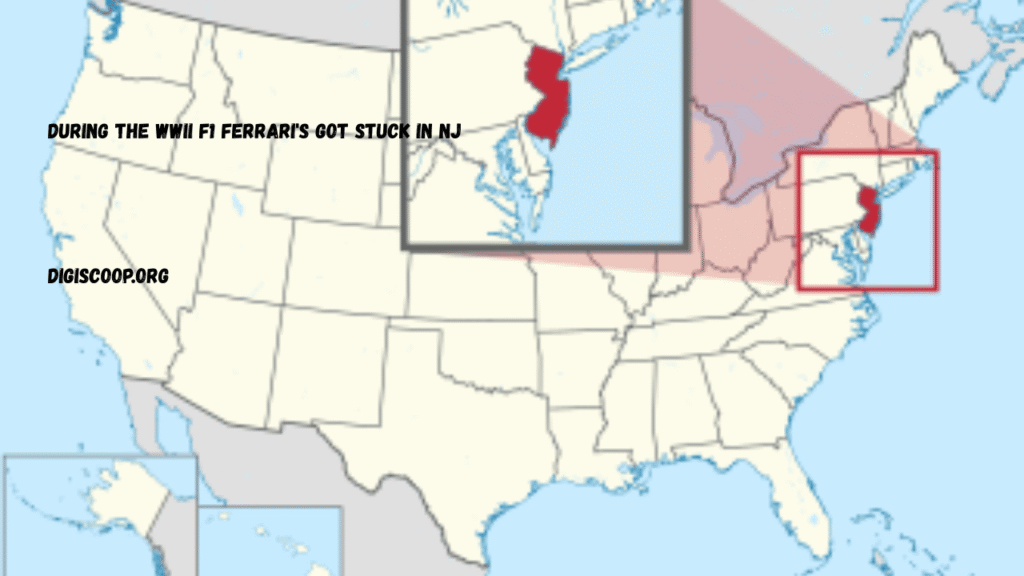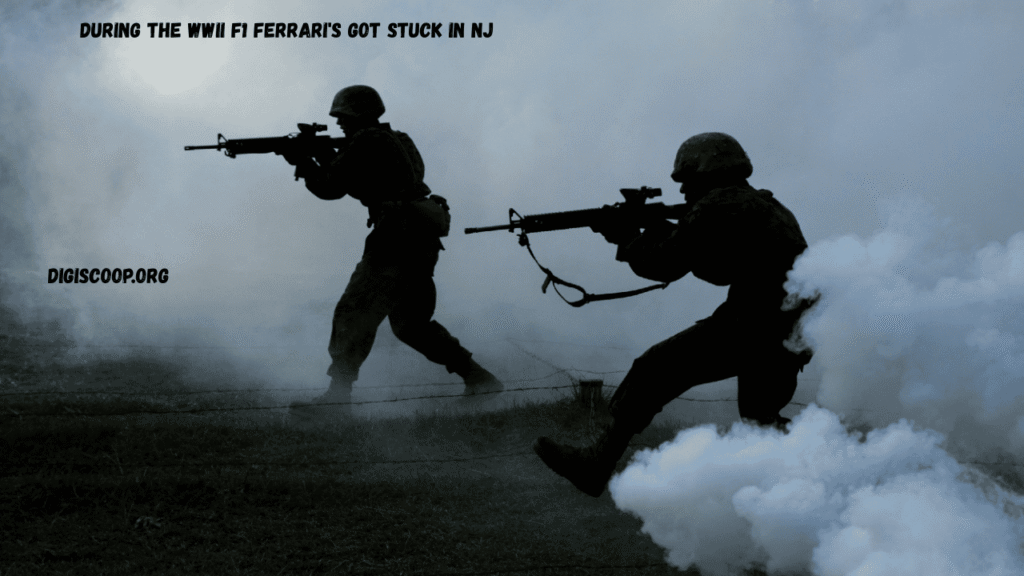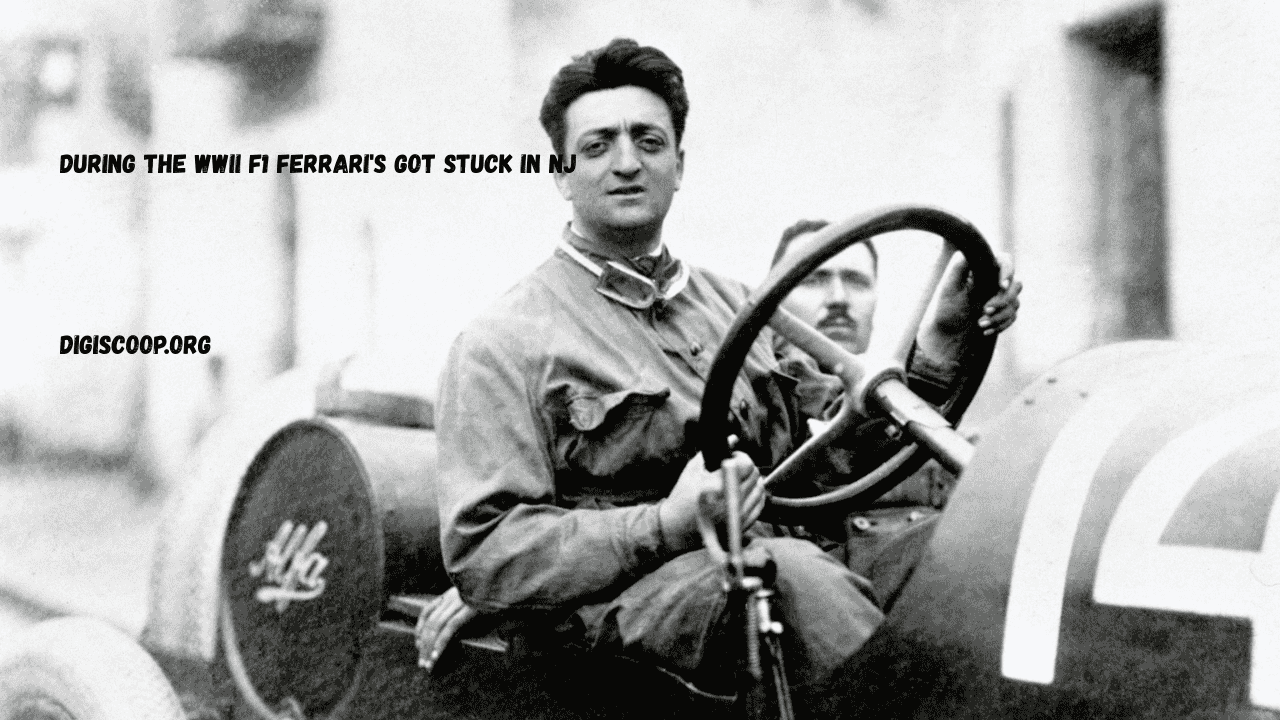Introduction
The phrase “during the WWII F1 Ferrari’s got stuck in NJ” sounds like a strange mix of motorsport, global conflict, and unexpected geography. While Ferrari’s modern image is tied to the glamour of Formula 1 and the sleek streets of Europe, this imagined story places part of its journey across the Atlantic, in New Jersey, right in the middle of the Second World War. By weaving together historical context, the origins of Ferrari, and the chaos of wartime transport, this article explores how such a scenario could have unfolded.
Ferrari Before Formula 1

Before Ferrari became synonymous with Formula 1 racing, Enzo Ferrari was focused on Scuderia Ferrari, a racing team founded in 1929 that managed Alfa Romeo’s racing efforts. Ferrari as a car manufacturer did not exist until 1947, when the first official Ferrari-badged car, the 125 S, was built. This means that during the years of World War II, Ferrari was not producing the glamorous F1 cars we think of today, but was laying the foundation for what would later dominate motorsport.
However, wartime often distorts timelines. Machinery, prototypes, or even partially completed vehicles could have found their way into unusual places. If an experimental Ferrari design, or even just its components, were shipped for testing or safekeeping, the chaos of the 1940s could easily have stranded them far from home.
New Jersey as a Wartime Hub

New Jersey might seem like an odd place for Ferrari’s fate to intersect with history, but the state was a vital wartime hub. Its ports handled massive amounts of cargo for the Allied effort. Troop ships, supply vessels, and industrial shipments passed constantly through Newark, Hoboken, and Jersey City. It was also a region filled with warehouses and makeshift depots.
It isn’t hard to imagine that a shipment containing valuable machinery—perhaps mislabeled, delayed, or intentionally hidden—could have ended up sitting idle in a New Jersey port or storage facility. If Ferrari parts, engines, or prototype frames had been part of such a shipment, they could have been “stuck” there for years until after the war.
The Fog of War and International Transport

The Second World War disrupted global transport networks on a scale never seen before. Ships were sunk in the Atlantic by German U-boats. Cargoes were rerouted, abandoned, or left languishing in harbors as priorities shifted to military needs. Civilian projects, including racing cars, were hardly considered essential cargo.
A Ferrari-related shipment crossing the Atlantic during the early 1940s would have faced an uncertain fate. Even if it made it safely to American shores, wartime bureaucracy and port congestion could have locked it in limbo. In this way, the idea that “Ferrari’s got stuck in NJ” becomes more than plausible—it’s almost inevitable when considering the wartime environment.
The Irony of Speed Stalled by War
There is a symbolic irony in imagining a Ferrari stuck in New Jersey during WWII. Ferrari’s identity is built on speed, elegance, and motion, yet here it becomes frozen in place by global conflict. The very qualities that define the brand—innovation, precision, performance—were sidelined by the demands of survival, rationing, and the war economy.
For Enzo Ferrari himself, the war years were about survival rather than racing glory. His factory in Maranello, Italy, was repurposed for wartime production, making machine tools and parts for the Italian military. Any dream of international racing or glamorous F1 competition was paused. The idea of Ferrari machinery sitting idle in a New Jersey warehouse captures this broader theme: ambition delayed by history.
A Hypothetical Legacy
If Ferrari parts or early prototypes truly had been stranded in New Jersey, one wonders what became of them. Were they quietly scrapped for metal, melted down to support the war effort? Did they remain hidden in a crate, forgotten until rediscovered decades later? Or perhaps they were noticed by American engineers, sparking curiosity about Italian design and craftsmanship at a time when collaboration across the Atlantic was limited.
Such a moment could have represented a symbolic “first arrival” of Ferrari in the United States, years before the company officially entered the American market in the postwar era. New Jersey, in this sense, might have been an unintentional gateway for Ferrari’s eventual rise in America.
Aftermath and Ferrari’s Rise
When the war ended in 1945, Europe was in ruins but the appetite for speed and innovation was reborn. By 1950, Formula 1 was established as a global championship, and Ferrari entered the grid with full force. The company quickly became a dominant name, not only in racing but also in the luxury sports car market.
The imagined detour through New Jersey during the war highlights how fragile yet resilient Ferrari’s journey was. Even if its progress had been halted, delayed, or diverted, the postwar years saw it recover with unmatched momentum. In this way, the story becomes a metaphor for Ferrari itself: paused by conflict, but destined to surge forward.
Conclusion
The idea of “during the WWII F1 Ferrari’s got stuck in NJ” may sound like a quirky myth, but it reflects real truths about history. War disrupted everything, from global shipping lanes to the dreams of engineers and racers. Ferrari, still in its infancy, was not immune to these forces. Whether literally or symbolically, the image of a Ferrari trapped in New Jersey during WWII captures the tension between human ambition and historical circumstance.
Ferrari’s later success makes this imagined episode all the more striking. From crates gathering dust on a wartime dock to roaring engines on the Formula 1 circuit, the journey represents how even stalled beginnings can lead to greatness.
Also Read : Maury, Ange, Faith, Martinez, Daquan, and Jorge: A Collective Narrative of Connection and Identity







